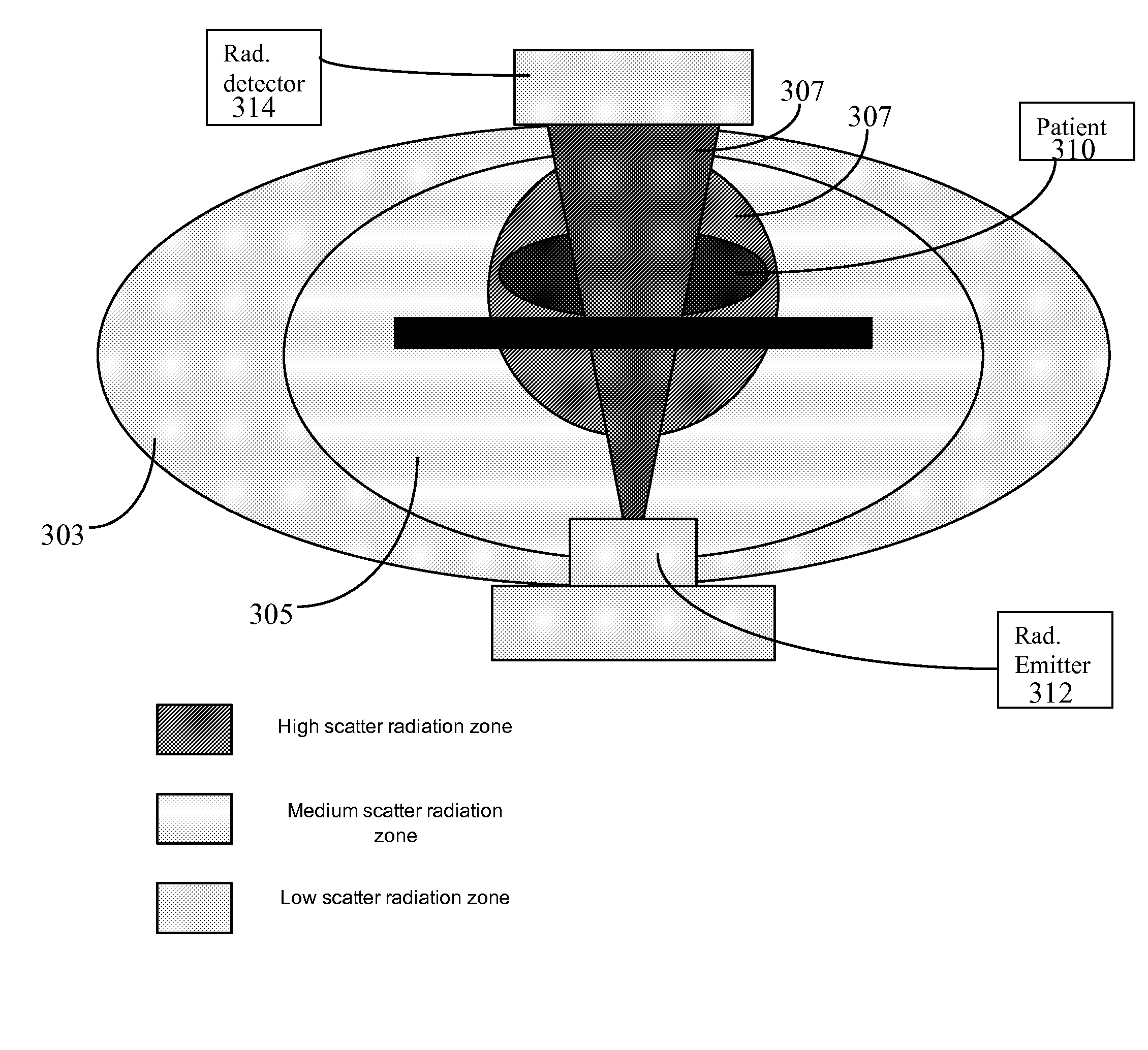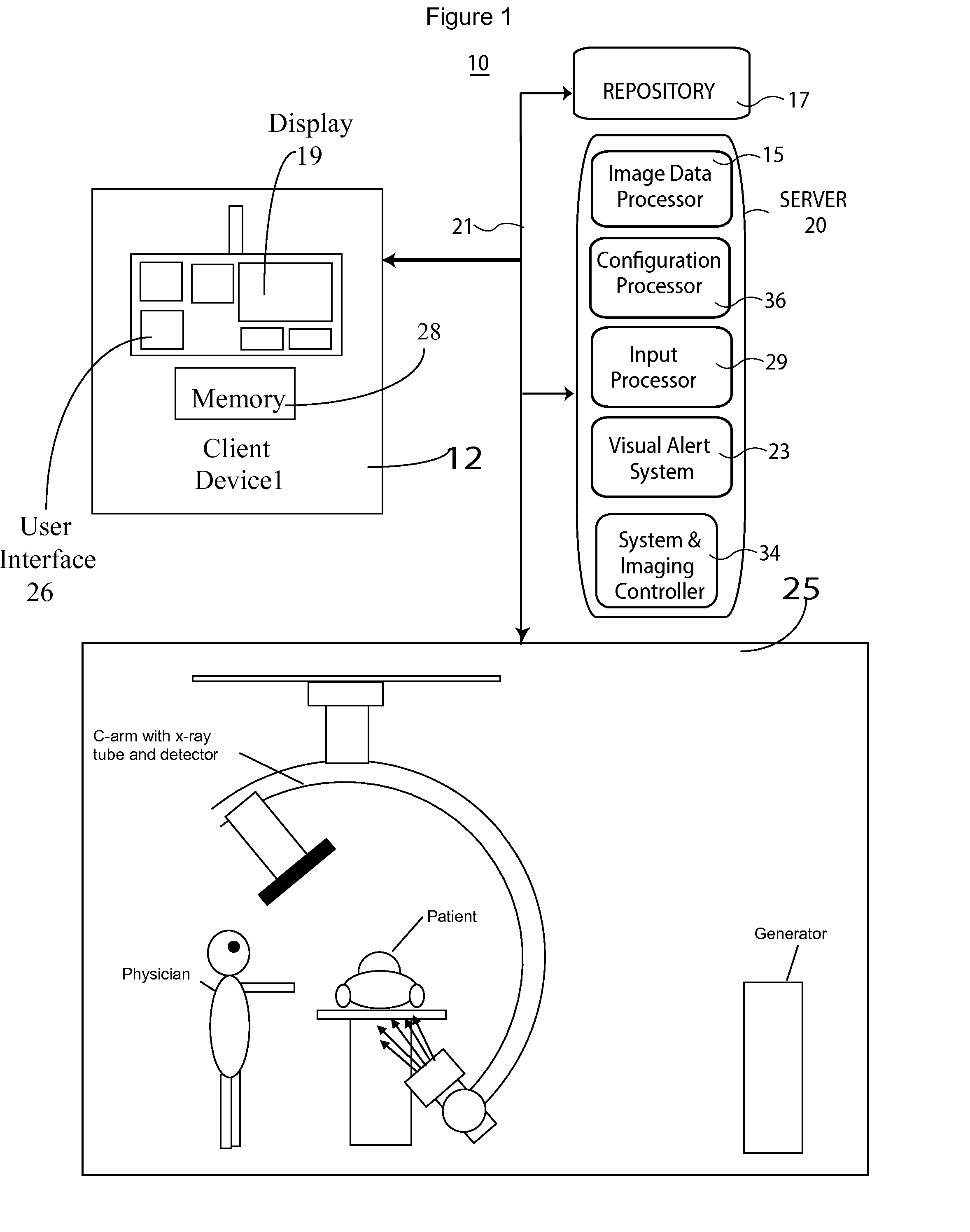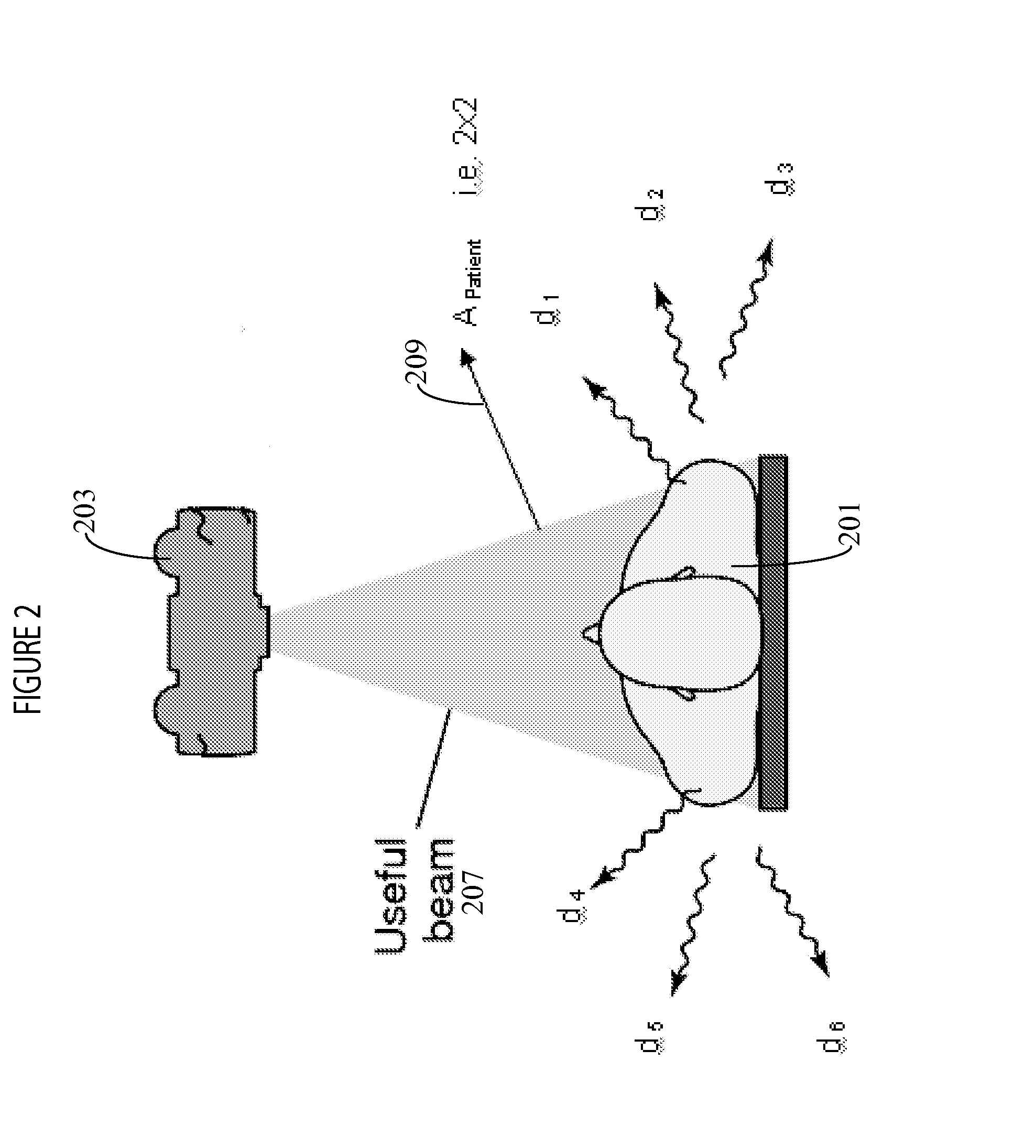System for Identifying Radiation Zones in X-ray Imaging
a radiation zone and imaging technology, applied in the direction of material analysis using wave/particle radiation, instruments, applications, etc., can solve the problems of radiation not being detected by human senses, exposure to scattered radiation also poses a hazard, and severe radiation burns
- Summary
- Abstract
- Description
- Claims
- Application Information
AI Technical Summary
Problems solved by technology
Method used
Image
Examples
Embodiment Construction
[0010]A system displays potential radiation zones in an angiography X-ray laboratory during an angiography procedure, for example. Scattered radiation is produced by X-rays being deflected by patient anatomy, such as bone. It has been advantageously determined that the proportion and amount of the bad non-image forming scattered radiation versus the good radiation is a function primarily of the volume of anatomy being radiographed. The amount of radiation scattered into an area depends on the factors such as the level of acceleration (tube) voltage (in Kv) used, body mass index of a patient (B MI) and selected angle of a radiation detector, for example.
[0011]FIG. 1 shows system 10 for identifying areas of potentially harmful radiation due to X-ray scatter in an imaging room. System 10 includes one or more processing devices (e.g., workstations, computers or portable devices such as notebooks, Personal Digital Assistants, phones) 12 that individually include a user interface 26 enabl...
PUM
 Login to View More
Login to View More Abstract
Description
Claims
Application Information
 Login to View More
Login to View More - R&D
- Intellectual Property
- Life Sciences
- Materials
- Tech Scout
- Unparalleled Data Quality
- Higher Quality Content
- 60% Fewer Hallucinations
Browse by: Latest US Patents, China's latest patents, Technical Efficacy Thesaurus, Application Domain, Technology Topic, Popular Technical Reports.
© 2025 PatSnap. All rights reserved.Legal|Privacy policy|Modern Slavery Act Transparency Statement|Sitemap|About US| Contact US: help@patsnap.com



